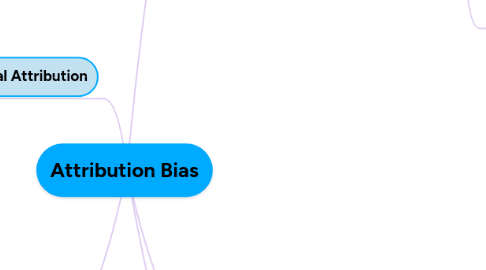
1. The False Consensus effect
1.1. People do not ignore consensus information but rather provide their own consensus information. People see their own behaviour as typical and assume that under similar circumstances others would behave the same way.
1.2. Ross Green and House (1977): Asked students if they would agree to walk around campus for 30 mins wearing a sandwich board carrying a slogan 'Eat at Joes'. Those who agreed estimated that 62% of their peers would also agree while those who refused estimated that 67% of their peers would have also refused.
1.3. The false consensus effect can arise in several ways: -we usually seek out similar others and so should not be surprised to find that other people are similar to us. -our own opinions are so salient to us, at the forefront of our consciousness, that they eclipse the possibility of alternative options. - we are motivated to ground our options and actions in perceived consensus in order to validate them and build a stable world for ourselves.
2. Dispositional Attribution
2.1. Is the explanation of individual behaviour as a result caused by internal characteristics that reside within the individual, as opposed to external (situational) influences that stem from the environment or culture in which that individual is found.
3. Correspondence bias
3.1. Tendency for people to overly attribute behaviour to stable underlying personality dispositions/ attributes.
3.2. Originally called fundamental attribution error, although correspondence bias and fundamental attribution error are not identical they are often used interchangeably.
3.3. Fundamental Attribution Error
3.3.1. Tendency for people to make dispositional attributions for others' behaviour, even when there are clear external/environmental causes.
3.3.2. Jones and Harris (1967)
3.3.2.1. -Castro Study displaying Fundamental Attribution Error
3.3.3. Cultural and developmental Factors
3.3.3.1. correspondence bias = originally called fundamental attribution error because it was considered to be an automatic and universal outcome of perceptual experience and cognitive activity . However, factors and culture may affect the correspondence bias.
3.3.3.1.1. Example: In western cultures, young people explain action in concrete situational terms and only learn to make disposition attributions in late childhood.
3.4. Barjonet (1980)
3.4.1. -The tendency to attribute road accidents unduly to the driver rather than the vehicle or the road conditions.
3.5. Outcome Bias
3.5.1. -In which people assume that a person behaving in some particular way intended all outcomes of that behaviour.
3.6. Essentialism
3.6.1. -In which behaviour is considered to reflect underlying and immutable, often innate , properties of people or the groups they belong to.
3.6.2. Can be troublesome when it causes people to attribute stereotypically negative attributes of out-groups to essential and immutable personality attributes of members of that group.
3.6.2.1. Example: The stereotype of an out-group as being laid back, liberal and poorly educated becomes more pernicious if these attributes are considered immutable, perhaps genetically induced properties of the groups' members - the people themselves are considered to have personalities that are immutably lazy, immoral and stupid.
3.7. Linguistic factors
3.7.1. Nisbett and Ross (1980) observed that the English language is constructed so that its very easy to describe an action and the same terms and much harder to describe the situation in the same way. Example: you can talk about a kind or honest person and a kind or honest action but not a kind or honest situation.
4. Actor- Observer effect
4.1. Refers to the tendency for other people to attribute others' behaviour internally to dispositional factors and their own behaviour externally to environmental factors. (Jones and Nisbett, (1972))
4.1.1. Example: When a shop assistant is rude and you think 'what a rude person' =an internal attribution to the shop assistants personality. In contrast, the last time you snapped at someone you probably blamed it on external factors such as pressure or stress.

